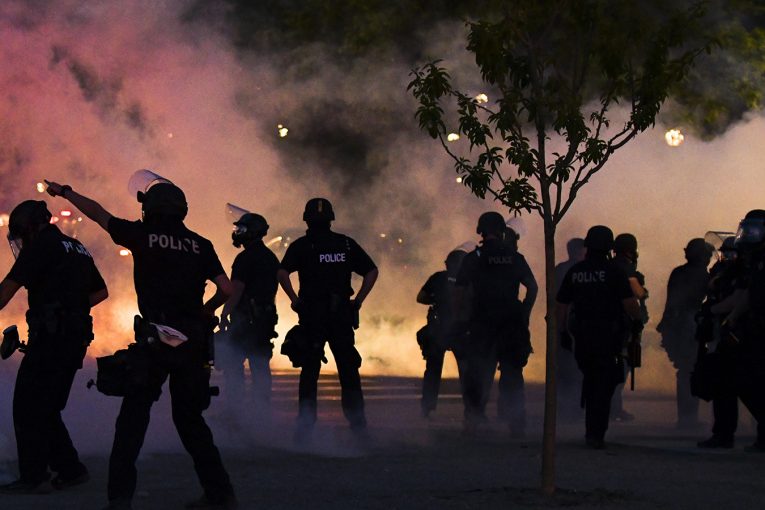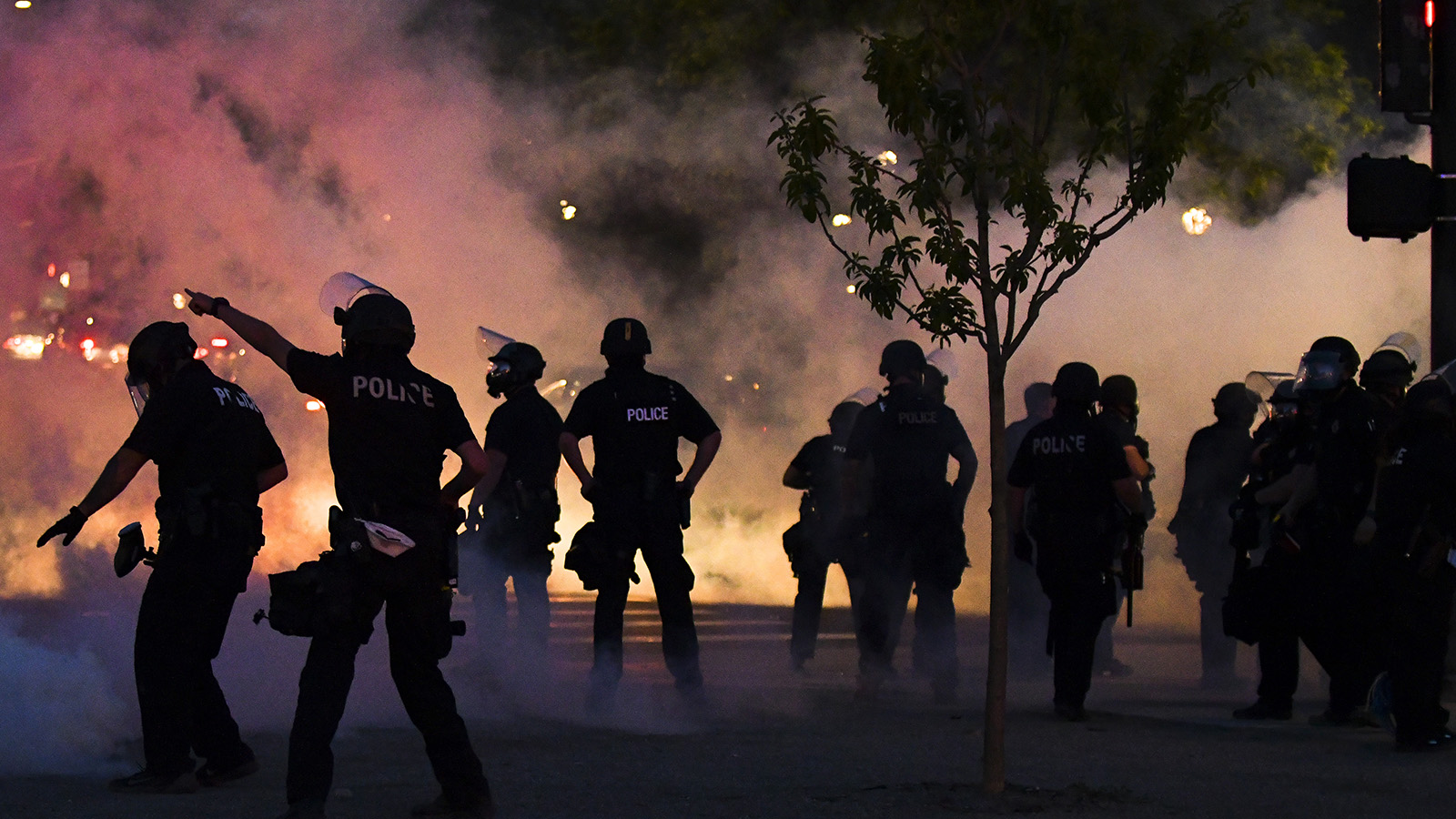

By Julietta Bisharyan, Linh Nguyen, and Lauren Smith
DENVER – The murder of George Floyd by Minneapolis police on May 25, followed by the murder of Breonna Taylor by Louisville police on March 13, garnered national attention that led to national protests over police brutality and systemic racism in the criminal justice system.
In the days and months following George Floyd, Breonna Taylor, and others’ murders at the hands of police, protests erupted in cities nationwide, including Denver.
These protests were initially peaceful; however, as has been the conclusion in other cities who have done follow-up studies, after a few days “confrontation erupted.”
The Denver City Council requested that Denver’s Office of the Independent Monitor (OIM) conduct an investigation into the Denver Police Department’s (DPD) response to demonstrations.
The OIM recently released report summarizes the results of the independent investigation conducted between June and November 2020.
Not only does the report outline the events leading up to violent protests in Denver and address “deficiencies in the DPD’s internal controls on officer use of force,” it also makes “16 actionable recommendations to the DPD that are intended to help keep officers and community members safe in the event of future” protests in Denver.
The OIM reviewed and analyzed “officer use of force statements, injury reports and arrest records” as well as “Denver Health calls for service…Emergency Operation Center situation reports [and] video and audio recordings.”
According to the report, the first five days of protests led to “81 officer injuries, with 11 officers placed on limited duty and four needing to take time off work.” The report further states  that “we are aware of no other event in Denver’s recent history that resulted in this number of injuries to DPD officers.”
that “we are aware of no other event in Denver’s recent history that resulted in this number of injuries to DPD officers.”
As for civilian injuries, the report states that it is “impossible to determine” how many community members were injured because “those injuries went unreported.” However, three lawsuits were filed against the DPD, the City and County of Denver alleging “serious injuries as a result of enforcement action” during the George Floyd Protests, while an additional 50 “notices of claim have been served.”
Some of the injuries mentioned in the lawsuits include “eye injuries and ligament damage from less-lethal projectile strikes,” which can include so-called “rubber” bullets, pepper ball projectiles and tear gas munitions.
The OIM’s report states that there is “recent research” illustrating that police responded to demonstrations about police brutality more aggressively than they do with other protests.
The way to combat this, notes the report, is by implementing “tighter internal controls on the use of force during protests that are about police conduct.” The report also states that “we do not believe that the DPD sufficiently met that challenge” during the protests.
When analyzing the use of force, the OIM noticed “significant gaps in the documentation that was available” from the DPD.
However, they analyzed the “vague” documentation they did have and detailed the types of less-lethal equipment and munitions used by DPD during the protests including pepperball launchers, 40mm launchers, OC foggers (pepper spray), and gas and smoke grenades.
In the rubber-ball grenade section, the report states that neither “the DPD Use of Force Policy nor its Crowd Management Manual include any discussion about the appropriate use of rubber-ball grenades.”
The OIM report next breakdowns the amount of less-lethal munitions purchased during the protests and the costs and concludes that there was “incomplete tracking of less-lethal munitions.”
Not only were munitions not effectively tracked during the protests, staffing was not either. According to the report, the DPD made a roster after the fifth protest day and when the OIM inquired about the first four days of protests, they “got varying answers…none were authoritative.”
Furthermore, during the chaotic protests, the report found that lack of officer identification was a problem—violating policy—because the “public has a right to expect accountability during an encounter with law enforcement, and accountability includes having a means for citizens to identify officers.”
Another problematic aspect is that the presentation slides from a DPD crowd control refresher training does not address requirements to wear identifying information.
The Uniforms and Equipment Policy states that a “badge will be worn on the uniform shirt attached to the badge holder or on the outermost garment to be clearly visible at all times” and that the “badge will designate the appointed position or civil service rank and the officer’s serial number.”
In fact, of the 56 complaints alleging misconduct by DPD officers during the protests closed, 20 were declined for further investigation and review, in part, due to an inability to identify the subject officer.
Some of the declined complaints involved serious allegations, including officers firing pepper ball rounds into a car of people trying to leave the protests or officers throwing flash bangs into the backyard of a private residence.
Regarding lack of training and misconduct, the report found that only a few officers were certified in use of pepperball and 40mm launchers, meaning that a majority of the 500 officers were uncertified.
To become an authorized user, officers must successfully complete four hours of training and pass both a written exam and practical qualification.
However, in officers using such equipment, some community members expressed belief that DPD relied too heavily on less-lethal equipment and munitions that led to more uses of force than would have been otherwise necessary, including deploying pepperball rounds at people not engaged in physical resistance and continuing to deploy explosive munitions after their use caused people to leave an area.
The DPD’s single standard for its use of pepperballs is defensive resistance, which the Use of Force Policy defines in crowd control situations as “physical actions by members of a crowd that constitute an unlawful assembly and/or disruption to pedestrian or vehicle traffic.”
“We believe that this standard is too low for direct-fired pepperball use,” the report said. “We believe that striking someone directly with an impact projectile that could cause them serious harm during crowd control should be reserved for situations in which individuals are engaging in no less than active aggression, defined as ‘an overt act or threat of an assault, coupled with the present ability to carry out the action, which reasonably indicates that an assault or injury to a person is likely.’”
Moreover, despite the use of some of these high-risk explosive devices, the Use of Force Policy and Crowd Management Manual provides no guidance for the appropriate use of these devices.
According to the report, “the Use of Force Policy and Crowd Management Manual are silent on the topic, and nothing in the training documents the OIM reviewed indicates that the DPD has articulated a clear standard for the use of these devices or permits on specialized officers in tactical units to deploy them.”
The DPD also did not routinely tract its less-lethal munition inventory during the protests. Purchase invoices showed that the DPD ordered 300 new rubber-ball grenades on May 31, the fourth day of protests.
The report states, “Fundamentally, we believe that rubber-ball grenades, which risk striking peaceful and aggressive individuals alike, are inappropriate for crowd control under all but the most extreme circumstances. We believe that these devices are best used only for high-risk tactical applications. If they are to be used during crowd control, it is incumbent on the DPD to regulate their use with clear and explicit policy, which it did not do before the GFP.”
Mutual aid, which refers to the help from neighboring law enforcement, was also critical in DPD’s approach to the GFPs.
On May 28, DPD reached out to neighboring law enforcement for mutual aid. Eighteen different Mutual Aid Partners were involved in policing the protests in Denver, including the Denver Sheriff Department. Many agencies sent SWAT teams for mobile response in the downtown area.
Although mutual aid can be beneficial, it involves many risks, the report noted. For instance, officers from other cities may have different training and less-lethal tools that may not be approved for use in the host city.
To avoid this, ground rules can be established to specify what forms of aid will be provided by through mutual aid. After a review of the materials sent in by the DPD, serious gaps were found in their mutual aid framework, the report stated.
For starters, the DPD was unable to produce relevant mutual aid agreements between the neighboring law enforcement before GFP. As a result, the types of aid provided by the different agencies were varied.
Several Denver community members reported excessive force used by officers, whom they presumed to be DPD. To maintain consistency between policies, equipment and munition, the host agency should use its own officers in locations that are more likely to experience violence and thereby may require officers to use force.
The DPD apparently produced after-action reports and rosters but failed to establish use of force policies. There were several differences between the use of force policies of the other agencies and of DPD’s.
For one, several agencies had a less restrictive use of force standard than what appeared in DPD policy. In addition, not all of the mutual aid partner policies stated explicitly the resistance thresholds at which certain less-lethal equipment and munitions could be used.
And while the DPD use of force policy required its officers to intervene to prevent officers from using inappropriate force, not all mutual aid partners’ policies included similar requirements.
Certain equipment and munition used by Mutual Aid Partners during the GFP were not approved for use by the DPD.
In particular, DPD stated in a motion that their officers did not use rubber-ball rounds during the protests. Documentation from Mutual Aid Partners, however, show that at least one Mutual Aid deployed rubber bullets. The same thing can be said for the use of less-lethal shotguns and beanbag rounds.
The OIM recommends that the DPD should seek to participate in joint trainings and exercises with potential Mutual Aid Partners to ensure a unified and consistent response in future mutual aid deployments in Denver.
Another issue during the mass protests was the role of the Incident and Operations Chief. It is the responsibility of the Incident Commander to be in frequent communication and work in tandem during a protest, wrote the OIM.
Supervisors of several ranks, however, reported that they often received insufficient direction in the field and sometimes did not know who the Operations Chief was on certain days.
In addition, the OIM report noted, many officers and supervisors complained that excessive traffic on the single radio channel used during the protests hampered the free flow of information between the Command Post and the field.
Many officers also expressed a desire for additional crowd control training. According to the review, there has been a decline in the volume and frequency of crowd control and field force training in recent years.
Based on the review, the OIM made several recommendations, such as additional training and developing mutual aid agreements, to ensure that the experiences during the protests do not happen again in future events.
 Julietta Bisharyan is a fourth-year student at UC Davis, currently majoring in English and minoring in Art History and Professional Writing. She is
Julietta Bisharyan is a fourth-year student at UC Davis, currently majoring in English and minoring in Art History and Professional Writing. She is  from South San Francisco.
from South San Francisco.
Linh Nguyen is a third year Political Science student at UC Davis, also pursuing a minor in Professional Writing. She is an aspiring investigative journalist from San Jose, California, who also shares interests in literature and baking
 Lauren Smith is a fourth year student at UC Davis, double majoring in Political Science and Psychology. She is from San Diego, California.
Lauren Smith is a fourth year student at UC Davis, double majoring in Political Science and Psychology. She is from San Diego, California.
To sign up for our new newsletter – Everyday Injustice – https://tinyurl.com/yyultcf9
Support our work – to become a sustaining at $5 – $10- $25 per month hit the link:
These seem to me to be reasonable precautions for law enforcement engagement with protestors.